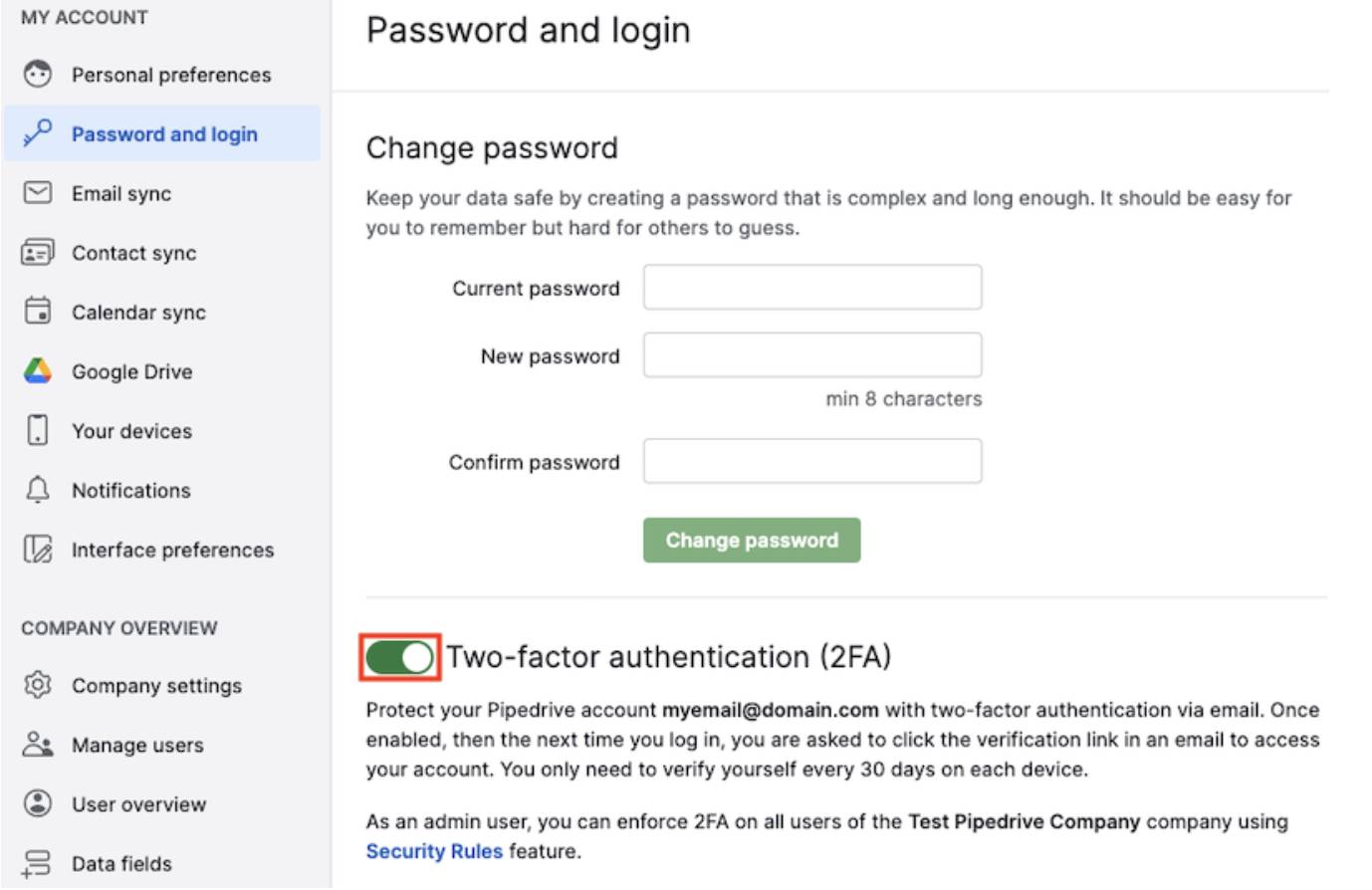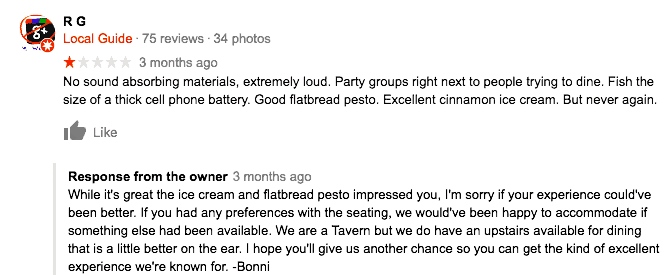Our view at Stack - Pipedrive is a robust CRM platform, offering automation, contact data collection, webhooks, AI-powered sales assistant, email communications, email marketing, and customisable sales pipeline workflows.
When customers trust your brand, they’re more likely to return and share positive experiences with others.
To build trust, you must show customers you’re consistent, reliable and focused on creating great customer experiences.
In this article, we’ll explore why customer trust is crucial to business success. We’ll also cover six actionable strategies you can use to generate trust organically.
What is customer trust?
Customer trust is consumers’ confidence in your products, services and overall reliability. You build it by consistently delivering positive customer experiences. Building customer trust is key to creating long-term relationships with loyal customers.
For example, consider a software company with a helpful product that prioritizes data security. The company updates the software, tells customers about vulnerabilities and addresses security breaches quickly, resulting in customers feeling safer using it.
This trust helps the company build a loyal customer base and attract new customers through positive word-of-mouth. Over the long term, customer trust leads to sustained revenue and business growth.
Download our customer journey map template
Start mapping your customer journey with our free customer journey template.
Why is customer trust important?
Customer trust is a vital part of growing your customer base. Here are some key ways customer trust helps businesses grow:
-
Enhanced loyalty and customer retention. Customer trust generates repeat business. Satisfied people are more likely to stay with a brand, reducing acquisition costs and increasing customer lifetime value.
-
Positive word-of-mouth. Trustworthy businesses earn recommendations. Happy customers share their experiences and attract new clients through word-of-mouth.
-
Increased sales. Trust increases customer confidence in purchasing decisions and boosts sales. Reliable companies have higher conversion rates and a better bottom line. Consumers are also often willing to pay a premium for trusted brands.
-
Better resilience in times of crisis. Trusted brands recover faster when things go wrong. Customers are more likely to give you the benefit of the doubt and return if you have a good brand reputation.
-
More competitive advantage. Trust differentiates a brand and creates a unique selling proposition. Customers will choose a company they trust over one they don’t know.
The more you build customer trust, the more satisfied customers you’ll have in the short and long term.
Recommended reading

10 reliable ways to delight the customer and amplify customer loyalty
What makes customers trust your brand?
Customers will trust your brand if you give them consistently positive experiences. These experiences should span the entire customer lifecycle, from first contact to repeat purchases and everything in between.
Here are the key factors that improve customer experiences and build trust:
Consistency
When you consistently meet or exceed customer expectations, you create a predictable and reliable experience. Eventually, this consistency creates a feeling of security, making customers believe your products and services will be worth it.
For instance, customers are more likely to choose your brand if your deliveries are always on time and the products are high-quality. They’ll know that you’re dependable, so they won’t need to take a risk on an unknown company’s product.
Transparency
Transparency involves being open and honest about your company’s practices and policies. Customers appreciate knowing how your brand operates. They want to know how you handle their data, where your products originate and what your services offer. Openness like this shows that your brand has nothing to hide, building credibility and trust.
Quality
Quality assurance proves that you value your customers and want to give them the best possible experience. When customers consistently receive quality products or services from you, they’ll quickly begin to trust you.
Excellent customer service is also crucial. Providing prompt and effective support shows that you focus on customer satisfaction and will try to fix issues if they arise. Over time, this creates a strong bond between you and your customers.
Ethical practices
Customers care about your brand’s story and support companies that mirror their own ethical beliefs.
If your company demonstrates integrity, treats employees well and uses eco-friendly business practices, it will demonstrate its commitment to more than just profits. Customers will see that you’re committed to high ethical standards and will be more likely to trust and support you.
Privacy and data security
As privacy breaches become more common, strong data security can strengthen customer trust. If your company goes the extra mile to protect customer information, customers will see you care about their privacy and security. They’ll feel safer and more confident that their sensitive information is in good hands.
Customer feedback and positive reviews
Customers check reviews before purchasing from a new company. If they see that you have consistently good reviews, they’ll be more likely to go with you.
Likewise, if you respond to reviews empathetically and effectively, they’ll see that you genuinely care about customer satisfaction, helping to build trust.
Recommended reading

Everything you need to know about customer sentiment
How to build trust with customers
With different products, services and values, every company needs a unique approach to building trust. Over time, you’ll see what tools and techniques work, helping you fine-tune how you interact with your customers.
However, some universal strategies can help you start. Let’s take a closer look at six actionable trust-building strategies.
1. Maintain and deliver high-quality products and services
Delivering high-quality products and services reassures customers that they can depend on your brand to address their needs and pain points. It shows a commitment to excellence, reinforcing the feeling that your company will keep providing great experiences.
Here are some tactics to use:
-
Set clear quality standards. Develop and stick to strict quality control processes. Ensure that your products and services meet these benchmarks. Consider starting a dedicated quality assurance team to track quality metrics and enforce standards.
-
Seek feedback and test regularly. Test your products and gather customer feedback to find areas for improvement. Solve issues quickly and implement highly requested features to satisfy customers and reduce churn.
-
Invest in training. Ongoing training can help your employees maintain high service standards and keep everyone consistent with the latest quality controls.
For example, Lego has long produced consistently high-quality products. It builds each piece to a precision of under 0.0001 inches, ensuring they can always lock together. Decades-old pieces still connect perfectly. Lego even pioneered new engineering techniques to provide the highest possible quality.
Lego’s dedication to quality has built a solid reputation and helped it remain the world’s most valuable toy brand for over 10 years. By applying the same ethos to your company, you can create products and services that customers trust.
2. Communicate policies, pricing and practices clearly
Transparency is critical for building trust with customers. Clearly communicating policies, pricing and business practices helps customers know exactly what to expect from your company. When fully informed, they can feel more confident about purchasing from you.
Being open with customers also reduces misunderstandings and ensures customers know what to expect.
Here are some ways to improve your transparency.
Provide transparent pricing
Clearly outline the cost of your products and services, including potential additional fees or charges. Make sure customers know what they get and for how much.
If you advertise a service for a certain amount and then add surprise costs at checkout, your customers might abandon the purchase. Transparent pricing means they have an accurate idea of the cost and will be more likely to complete the purchase.
Create accessible policies
Make key policies like returns, refunds, privacy policies and terms of service easily accessible on your website.
When customers buy from you for the first time, they may need clarification on whether your products will meet their expectations. A good return and refund policy can give them the confidence to commit.
Update customers when things change
Regularly update customers about changes to your policies and pricing through your main channels. Surprising customers with new policies or pricing strategies can catch them off guard, leading to a loss of trust. If you let them know about changes ahead of time, you give them a chance to decide for themselves, reducing uncertainty and enhancing trust.
Develop educational content
Create informative content like FAQs, how-to guides and explainer videos that provide in-depth information about your products, services and company. Show customers what they can expect with a detailed knowledge base and real-world examples.
For instance, Pipedrive has an extensive knowledge base, training academy and community support so customers can always find answers to their questions.
Here’s a sample view of some of its courses.

It goes beyond explaining basic features and covers advanced topics that help people get the most out of their subscriptions, boosting value.
3. Provide exceptional customer service
Outstanding customer service is one of the most powerful ways to build consumer trust. It ensures issues are resolved quickly, leaving customers with a positive experience even when problems occur.
Here are some actionable tips to improve your customer support:
-
Provide prompt responses. Address customer inquiries and complaints as quickly as possible. Prompt responses alleviate frustration and show customers that you take their concerns seriously.
-
Be empathetic. Train your customer support team to listen actively and be emphatic. They should understand and validate a customer’s experience while seeking the best solution to their problem.
-
Be proactive. Anticipate potential issues and reach out to customers before they happen. For example, you could remind customers of a subscription renewal or seek feedback to see if there’s any way you can improve their experience.
-
Personalize your interactions. Adding a personal touch to your communications can make customers feel more valued. Use their names and address their specific customer needs rather than providing general responses to queries.
Forbes and HundredX recently ranked the top 300 companies for customer service. Among the top ten companies were The UPS Store, Trader Joe’s and Chick-fil-A. Forbes found that these top brands make everything from shopping to resolving problems easy for their customers. They offer hassle-free, quick and friendly service, fixing issues and leaving people with a positive experience after every customer interaction.
Note: A powerful support CRM like Pipedrive can help your sales and marketing teams provide exceptional customer service. Features like contact management, activity tracking and hundreds of integrations give them all the information they need in one place to tailor support and improve customer outcomes.
4. Use strong data protection measures
Protecting customer data has become crucial, with more companies falling victim to data breaches every year. According to McKinsey, up to 87% of consumers will avoid a company if they have security concerns.
Peace of mind is a foundation of trust. If you can prove that your customer’s data is safe in your hands, they’ll feel more confident investing in your products and services.
Here are some ways to gain customer trust with security measures:
Use advanced security technologies
Building a solid security foundation reduces the likelihood of data breaches and unauthorized access. Cybersecurity measures like encryption, access management systems and antivirus programs can help protect you against malware and scammers. Seek advice from experts in the field to ensure that customer data remains secure.
For example, Pipedrive uses industry-grade security infrastructure to protect customer data from breaches. It includes privacy and security features like user permissions, two-factor authentication and single sign-on to keep user data safe.

Train employees on cybersecurity risks and data handling
The more aware your employees are about cyber threats, the harder it will be for criminals to target your company.
Educate your employees about data security best practices. Develop in-depth data handling protocols so your employees know how to keep your data safe. Train them to spot scam attempts, such as phishing attacks, so they don’t fall victim and expose your data.
Develop a clear privacy policy
Well-crafted privacy policies build trust through transparency. To capitalize on this, create a comprehensive privacy policy that explains how you collect, use and store customer data.
Write in clear, simple language and avoid complex jargon. Specify what types of data you collect, like personal information, financial credentials and usage data. Outline why you collect this data and how it helps you provide better functionality. Explain whether you share it with third parties and offer opt-out options so customers can control their data.
When customers can see what you’re doing with their data, they can make an informed decision about their privacy and security.
Put a breach response plan in place
Establish and share a clear plan for response so that everyone in your company knows what to do if you experience a data breach.
The quicker you react to a data breach, the more damage you can prevent. By responding quickly and letting customers know what you’re doing, you can maintain customer trust during the security incident.
5. Showcase genuine values and maintain honesty
Communicating and following through on your core values helps you build an authentic customer connection. They’ll see that your company has integrity and acts on what it claims is important.
Start by defining your core values. Create a mission statement and communicate what your company cares about. Make sure to weave these values into every part of your company, from marketing to customer service.
Demonstrate your commitment to these values through clear actions. Some ideas include working with the community or partnering with respected organizations that support your cause. If your customers see you stand by your values through concrete actions, they’ll trust you quickly.
For example, Patagonia has built its brand around strong environmental values and it’s well-known for sticking to its word. The company’s mission statement is, “We’re in business to save our home planet.” It uses recycled materials and campaigns for environmental causes. It also donates a portion of its profits to grassroots environmental groups.
On its website, it explains:
By taking a similar approach, you can create a deeper sense of trust and attract new customers who share the same values.
6. Encourage reviews and testimonials
Customer reviews and testimonials leverage social proof to build customer trust. When potential customers see that others have had a positive experience with your company, they’re more likely to buy from you.
Here are three ways to build your level of trust through reviews and testimonials:
-
Make it easy to leave a review. Simplify the process for customers to leave reviews. Create clear calls-to-action (CTAs) on your website and send follow-up emails asking for reviews. You could encourage customers to share their experiences on social media.
-
Highlight positive testimonials. Showcase positive reviews and case studies on your website and in your marketing materials. Feature customer stories that show how you value and appreciate their time, input and experiences.
-
Respond to reviews. Engage with customers who leave reviews by thanking them or addressing their concerns. Doing this helps you turn negative reviews into positive experiences. It also shows potential customers that you will help if something goes wrong.
Check out this example of a response to a negative review from ReviewTrackers.

The business owner cleverly responds to a negative review by apologizing for the bad experience and showing how they can resolve this problem in the future.
A good rule of thumb is to remember that you aren’t responding just to the reviewer; you’re also speaking to everyone else reading it. If it’s a negative review, invite the customer to contact you directly and express an interest in resolving their issue. Doing this shows other customers that you’re responsive and keen to help, even if your company made a mistake.
Recommended reading

How to write an apology for an email sent in error
Final thoughts
Customer trust is a cornerstone of sustainable business success, built on reliability, transparency and a genuine commitment to customer satisfaction. Strategies like customer-centric service, protecting data and delivering high-quality products can boost client trust and create loyal brand advocates.
Enhance your customer relationships and build trust with Pipedrive’s robust CRM solution. Start your 14-day free trial today and see how Pipedrive can transform your CRM experience and foster customer loyalty.
If Pipedrive is of interest and you'd like more information, please do make contact or take a look in more detail here.
Credit: Original article published here.
